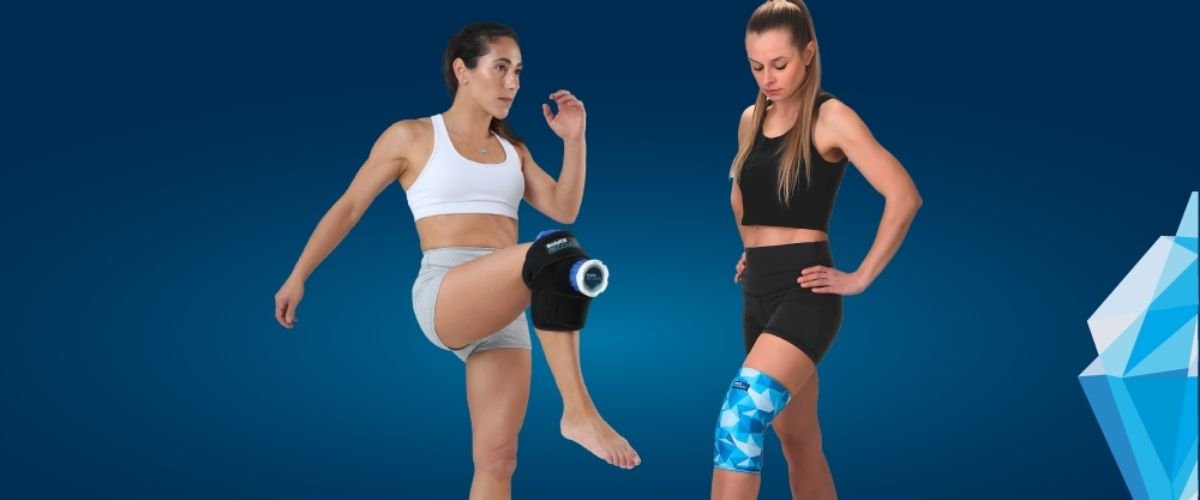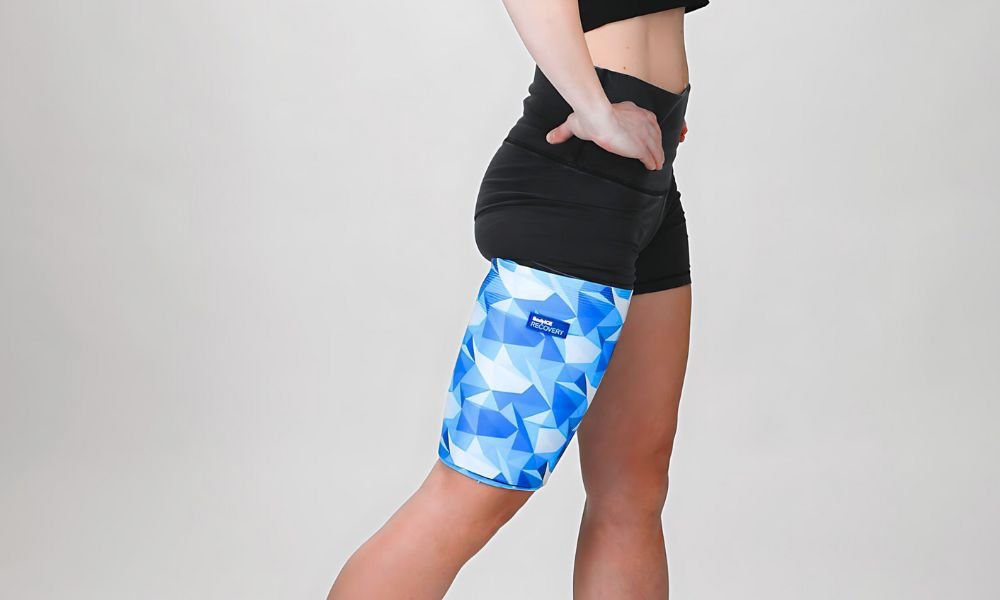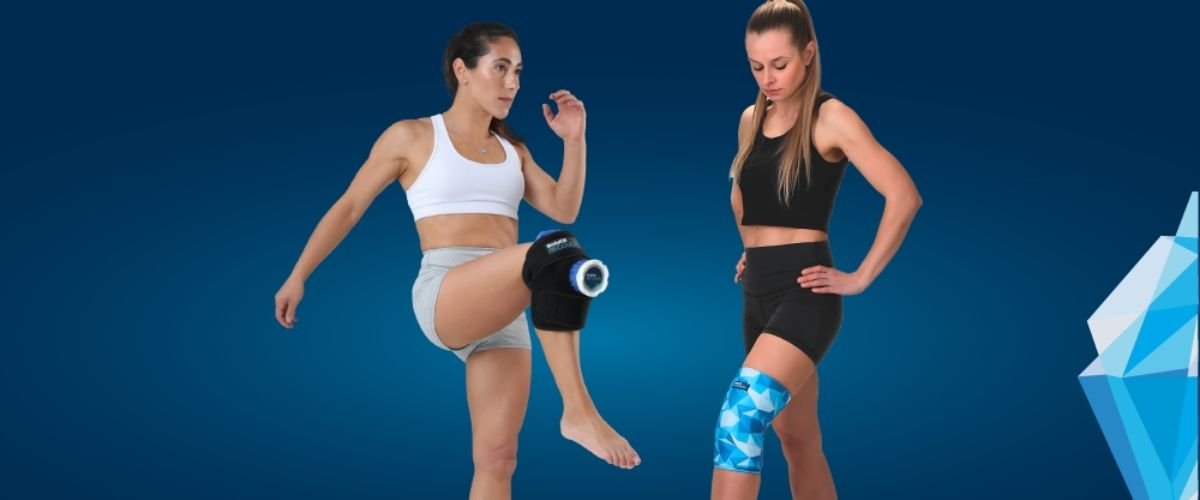Injuries are an unfortunate part of life, whether you're an athlete, weekend warrior, or simply navigating daily activities. Knowing how to properly treat an injury can dramatically affect your recovery time and comfort. One of the most common first-line treatments for musculoskeletal injuries involves the use of ice packs and heat packs. But how do you decide when to use cold therapy versus heat therapy? This guide will help you understand the benefits of each and provide clear direction on when to apply ice packs or heat packs for common injuries such as knee pain, back pain, shoulder injuries, ankle sprains, shin splints, and even menstrual discomfort.
Understanding Ice Packs and Heat Packs
Before diving into specific injuries and treatments, it’s important to understand what we are trying to achieve by using ice packs and heat packs for injury management.
Ice Packs (Cold Therapy)
Ice packs, or cold packs, are typically used to reduce swelling, numb pain, and slow down blood flow to an injured area. The medical term for cold therapy is cryotherapy. "Cryo" derives from Ancient Greek "krúos" which means is synonymous for ice, icy cold, chill, or frost.
Cryotherapy benefits include:
- Reducing inflammation and swelling after acute injury
- Numbing nerve endings to reduce pain
- Constricting blood vessels to control bleeding and reduce bruising
- Decreasing muscle spasms and tissue damage
Ice packs are usually applied within the first 24 to 72 hours following an injury, especially when there is noticeable swelling or bruising.
Heat Packs (Heat Therapy)
Heat packs, on the other hand, promote blood flow and relax muscles by dilating blood vessels. They increase oxygen and nutrient delivery to the affected area, which can facilitate healing.
Benefits of heat packs include:
- Increasing blood flow and circulation
- Relaxing tight muscles and relieving stiffness
- Improving joint flexibility and mobility
- Soothing chronic pain and muscle tension
Heat therapy is generally recommended for muscle soreness, stiffness, and chronic injuries rather than acute inflammation.

When to Use Ice Packs vs. Heat Packs: Common Injury Guide
There always seems to be some confusion for when to use and icepack or a heat pack so we'll try and break it down for you based on common injuries and conditions.
1. Knee Injuries
Use an ice pack for knee injuries when you are experiencing: swelling, inflammation, or pain often caused by trauma such as sprains, ligament tears, or after surgery.
How long should you use an knee ice pack?
Cold therapy immediately after injury can reduce swelling and numb pain. Use for 15-20 minutes every 2-3 hours during the first 48 hours. Our Medium Compression Gel Sleeve or Medium Universal Icepacks are perfect for knee joints and work great in delivering targeted cold compression that stays in place, so you can move comfortably while icing.
Use a heat pack for knee pain if you suffer from osteoarthritis or chronic discomfort. This will help increase blood flow to the joint, relax soft tissues, and improve flexibility and mobility for easier movement.

2. Back Pain
Back pain is one of the most common complaints and can range from acute injury to chronic tension.
When to use an ice pack for back pain?
If you have swelling and inflammation or just suffered an acute injury to your back, then cold therapy is recommended. Cold therapy will help control pain and inflammation.
When to use a heat pack for back pain?
Heat therapy is ideal for chronic back pain caused by muscle tightness or stiffness. Using a heat pack for back pain like our BodyICE Back design, increases blood flow, relaxes muscles, and can improve mobility. Use heat packs before stretching or exercise to prepare your muscles.

3. Shoulder Injuries
Shoulder problems vary widely, from frozen shoulder to rotator cuff injuries and it is a difficult area to ice or heat effectively.
Shoulder ice pack:
If you’ve just had shoulder surgery, suffered a dislocated shoulder, rotator cuff tear, or acute injury, use an ice pack for shoulder pain to reduce swelling and numb discomfort.
Shoulder heat pack:
If you have a condition like frozen shoulder or muscle tightness, a shoulder heat pack can increase blood flow, improve range of motion, and ease stiffness. Heat therapy encourages healing by relaxing tight tissues.
Our shoulder heat packs and ice packs are designed to make treating this tricky area simple. We have two options to choose from.
-
Our New Multipurpose Hydrogel Pack is a great option if you're looking for a versatile ice or heat pack that can treat a range of areas. You can place the whole pack in the freezer or microwave for soothing hot or cold relief.
- Our Shoulder Ice & Heat Pack is very popular post surgery and designed specifically for shoulders. You fill the ice bag with hot tap water or ice and use the strap to secure it in place.

4. Ankle Injuries
Ankle sprains and strains are very common, especially in active people.
Ankle ice pack:
Apply an ankle ice pack immediately after injury to minimise swelling and reduce pain. Use the ice pack for 15-20 minutes every few hours during the first 48-72 hours post-injury.
Heat pack for ankle:
Use heat therapy for chronic ankle stiffness or before mobility exercises to prepare the joint and surrounding muscles.
Our Small Compression Gel Sleeve or Small Universal Icepacks are perfect for knee joints and work great in delivering targeted cold compression that stays in place, so you can move comfortably while icing.

5. Shin Splints
Shin splints can be painful and debilitating and often result from repetitive stress or growth spurts in children or teenagers.
Ice pack for shins:
Cold therapy is the best choice to reduce inflammation and soothe sore muscles after exercise or prolonged activity.
Heat pack for shins:
Use heat therapy to relax tight muscles or before activity to increase blood flow and prepare the tissue.
Our Small Compression Gel Sleeve is ideal for shins or size up to the medium size for 360 degrees of cooling or warming relief.

6. Period Comfort
Many women seek natural relief for menstrual discomfort.
Period heat pack:
Heat is a well-known, effective method for easing menstrual cramps by relaxing uterine muscles and increasing blood flow. A period heat pack is a gentle, natural way to soothe discomfort during your cycle. Our Back/Hip design worn on the abdomen is perfect for this.
Period ice pack:
While less common, some find relief in cold therapy to numb intense pain, though heat remains the preferred method.

How to Use Ice Packs and Heat Packs Safely and Effectively
- Always test your skin. You may need a thin layer of cloth or towel between your skin and the ice pack to avoid frostbite or burns.
- Limit applications to 15-20 minutes at a time.
- Allow skin to return to normal temperature before reapplying.
- Consult your healthcare provider before using heat or cold therapy for chronic conditions.
Why Choose BodyICE for Your Cold and Heat Therapy Needs?
Why Choose BodyICE for Your Cold and Heat Therapy?
At BodyICE, we’re committed to providing ice packs and heat packs designed with your comfort, convenience, and recovery in mind. Our goal is to make cold and heat therapy simple, effective, portable, and affordable—helping you recover faster and get back to your best.
We offer two distinct styles to suit your needs:
- BodyICE Recovery range Featuring an insulated ice bag paired with a joint-specific neoprene strap, this classic design keeps ice cold for up to two hours. When used as a heat pack, it maintains warmth for around 30 minutes, providing targeted relief with lasting effectiveness.
- 360° Compression Gel Sleeves: Engineered for full 360-degree coverage, these sleeves use non-toxic hydrogel technology that stays soft and flexible even when frozen. They retain their temperature—hot or cold—for approximately 20 minutes, delivering comfortable, all-around compression where you need it most.
Both options are reusable, durable, and designed for mess-free, leakproof application- whether you’re recovering at home or on the move.
Final Thoughts
Choosing between ice and heat therapy depends on the type and stage of your injury or discomfort. Use ice packs to reduce inflammation and numb pain after acute injuries. Use heat packs to relax muscles, increase blood flow, and ease chronic stiffness. Whether you need an ice pack for knee, a shoulder heat pack, or a period heat pack, BodyICE offers safe, effective, and convenient options to support your healing and wellness journey.
For trusted relief that’s easy to use and designed for your active life, explore the BodyICE range of compression gel sleeves and cold/heat packs today.
Explore the range today






Leave a comment
All comments are moderated before being published.
This site is protected by hCaptcha and the hCaptcha Privacy Policy and Terms of Service apply.